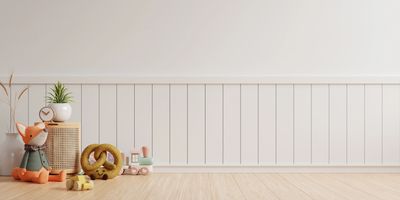Signed in as:
filler@godaddy.com
Signed in as:
filler@godaddy.com

Start with a corner, a tray, a box, a shelf. Expand slowly. Think minimal.
Remember, calming tones and clear surfaces reduce overstimulization.
Let your child have a say in how things look. Think of letting them hang their art in various places or arranging a shelf.
Refresh the space. Cycle through and replace books and materials regularly.
Try a diffuser with essential oils to set the mood or music to transition between activities.

What to do: Go outside, collect leaves, rocks, sticks, flowers bugs, etc.
How it helps: tactile exploration, mindfulness, grounding, vocabulary
Sample lesson: Bring a shoe box and Look for one thing for every color of the rainbow. Discuss your findings, their characteristics and connection to nature.

What to do: Collect a number of natural items that smell like a flower, zest of a lemon, soap, or chocolate. Blind fold the child and have them guess the smell.
How it helps: olfactory stimulation and memory skills
Sample lesson: "Close your eyes, use your nose, breathe in, what do you smell?"

What to do: gather home items like pasta, beans, socks or small towels and model sorting (your child will most likely join in naturally).
How it helps: Visual discrimination, categorization, calming repetition, fine motor skills
Sample lesson: "let's sort the crayons into the correct color bin!"

What to do: Use painters tape on the floor inside or outside and create zig zags, circles, steps and whatever else you can think of.
How it helps: Gross motor skills, vestibular and proprioceptive input.
Sample lesson: Create an "underwater ocean walk" or "bug hop" with different color tape like blue for water and green for grass and steppingstones.

What do to: provide child with bubble wrap and model popping or model ripping cardboard boxes for recycling.
How it helps: tactile input, creativity, sound stimulation, calming play
Sample lesson: "Let's pop all the little bubbles together!"

What to do: Find a safe spot on the pavement on a day it is not too hot. Bring chalk and any favorite toys.
How it helps: Visual tracking, creative interpretation, imagination, fine motor skills and writing skills, vocabulary
Sample lesson : Use the chalk to draw a scene, stand in different places and take pictures or use stuffed animals to tell stories.

Touch: A stream, moss, grass, soft petals, pointy pine sprigs, etc.
Smell: flowers, soil, fresh herbs, etc.
Sight: Make looking and noticing fun with games like "I spy" and "hide and seek".
Sound: Airplanes in the distance, frogs croaking, bees buzzing.
Taste: This is a great time to teach kids about safe foraging, gardening as a life skill, and more.

You can walk in nature with or without an agenda. Even ten minutes outside, in a backyard, a local park, or walking down the sidewalk is relaxing, resetting, and will have a lasting impact on your day and your child's development.
Ways to get started:
For Littles stroll outside, find a spot, let them explore.
Toddlers can point, pick, gather and learn vocabulary.

Children who are curious about bugs, step over the ant, stop to feel the breeze, and enjoy stacking rocks are immersing themselves in a world of never-ending learning opportunities. You don't need a large garden or forest, curiosity can bloom anywhere.
Ways to get started: Bring nature into your home. Pick herbs and use them while cooking, Nature inspired sensory bins ad more!